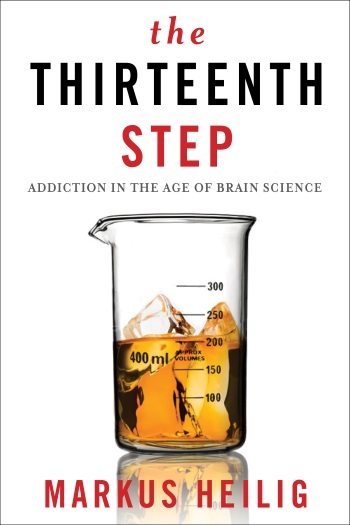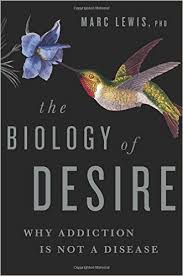
Yes, it’s a disease

No, it’s a habit
Addiction is a puzzling phenomenon. Why do addicts persist in self-destructive behavior even after it has lost them their jobs, their family, their health, and their self-respect? Do they have any control over their behavior? If so, why don’t they control it? If not, why not? Two recent books shed light on these questions: The Biology of Desire: Why Addiction Is Not a Disease, by Marc Lewis, and The Thirteenth Step: Addiction in the Age of Brain Science, by Markus Heilig.
Lewis is a neuroscientist and former addict; Heilig is a physician and addiction researcher. Lewis is convinced that addiction is not a disease, but a habit created by the neural circuitry of desire in the course of its normal functioning. Heilig is convinced that addiction is a chronic disease like diabetes that can’t be cured but that must be managed by lifelong treatment.
While they disagree about whether addiction is a disease, they actually agree about almost everything else. They agree that we should reject the stigma of addiction as a kind of moral failing. They reject the hypotheses that addiction is a matter of choice or self-medication. They think current diagnostic labels are inadequate. They both try to integrate two levels of information: the case histories of addicts and the scientific knowledge from research. They are both skeptical of AA and of conventional rehab programs. They both support evidence-based treatments. They both think addicts are not all alike and that individual addicts will respond better to individualized approaches.
Lewis: no, addiction is not a disease
Lewis argues that there is a developmental cascade, foreshadowed by difficulties in childhood, with a learning process about drugs or alcohol based more on desires than on pleasure, leading to ingrained habits and a restructuring of brain anatomy due to plasticity that unfortunately leads to a reduction of further plasticity. He tells the stories of five very different addicts to show what addiction feels like as he explains the neural changes underlying it. He sees recovery as a process of further development. He points out that the addicts who quit do so uniquely and inventively, through effort and insight, and he claims they end up stronger as a result. In his enthusiasm, he almost seems to be recommending addiction as a force for good, for personal growth. It’s a bit like cancer survivors who say they are better for it. They have made the best of a bad experience, but I hope they wouldn’t recommend it to others. They have grown, but there are other ways to grow.
The brain really does change with addiction; but he interprets this as learning, not brain disease. Similar brain changes occur with other types of goal-seeking, when people become absorbed in a sport or become obsessed by someone they fall in love with. The changes are not unique to drugs; people can become addicted to gambling, love objects, porn, food, sex, and other activities. Others argue that calling it a disease facilitates treatment, but he is convinced it can be harmful, damaging patients’ self-image and self-esteem and making them feel helpless.
Up to three quarters of drug and alcohol addicts recover without any treatment. 75% of the soldiers who became addicted to heroin in Viet Nam stopped using it when they returned to the US. In a rat study, rats raised in isolated cages were given a choice between water and morphine and they became addicted to morphine; but when they were moved to a large enclosure with other rats, they switched to water. That doesn’t sound like the way a disease works.
Drug abuse is irrational, but irrationality is an essential feature of human nature, not a disease. Addiction is a habit that is different from more benign habits in that it is mental rather than just behavioral, it involves strong feelings of desire, and it progresses from impulsive to compulsive behavior.
He discusses the role of adverse childhood experiences, ego depletion, distraction, having a coherent narrative of one’s life, re-directing desires to other goals, and empowerment.
People choose to stop when they have suffered more than enough. And when circumstances lend a hand. And when the possibility of self-control becomes as attractive – more attractive — than any other possibility, including temporary relief.
More arguments against calling addiction a disease:
- The brain changes disappear when people stop using.
- The loss of synaptic density is just the normal pruning that occurs with learning; it increases neural efficiency.
- The medical profession emphasizes genetics and downplays the role of experience and environment.
- Psychological and environmental predictors have more to do with how we experience our environment, but diseases are based on exposure, not experience
- Attraction to addictive drugs is a response to suffering, social isolation, and recurring negative emotions.
- Pharmaceutical drugs ease withdrawal symptoms and reduce addictive urges but only while they are still in the blood, often replacing addictive chemicals with related chemicals that can also be addictive.
- Drugs that act by disrupting the dopamine system have unfortunate side effects.
- Treatment centers start with drugs and then switch to 12-step programs that have nothing to do with medicine.
- Addiction treatment targets cognitive and emotional processes; there is no disease that can be arrested by doing that.
- Social processes like support and love are effective in addiction but not in any disease.
He advocates community-based programs and getting help for patients without delay as soon as their desire to change is ignited.
Heilig: yes, addiction is a chronic disease
…addiction is a malfunction of some of the most fundamental brain circuits that make us tick, and a disease that is not much different from other chronic, relapsing medical conditions.
Heilig begins with an appeal for compassion. He says
Drugs hook into brain circuitry we all rely on to obtain what we desire, avoid dangers, and make sensible decisions. Once you have realized that, it is impossible to look at a person with an addiction and escape the thought, “There, but for the grace of God, go I.”
He describes his own research and some of the amazing scientific advances he has seen during his career. He says the conventional medical model is painfully insufficient and “the system” interferes with the best treatment. The lessons from research have not been incorporated into standard addiction treatment. Patients are detoxed and treated briefly in inpatient facilities and then discharged with no systematic follow-up. They are handed off to AA, which may be comforting to some but has not been proven effective. They are usually not offered the treatments that are most likely to prevent relapse.
There is a double standard: relapse in diabetes and hypertension when patients go off their medications means the treatment is effective; relapse to drug or alcohol use following discharge from rehab is seen as treatment failure. Just as in any other chronic disease, addiction requires lifelong disease management with behavioral interventions and relapse-prevention medications.
Only a minority of active users of any substance will develop substance abuse and it may take many years. This is corroborated by rat studies where the pattern of compulsive use and relapse with re-exposure only develops in one-fifth of the animals, the same proportion that is seen in human epidemiological studies. Compulsive drug use reflects pathology of motivational brain circuits, and physical “dependence” on the drug is neither necessary nor sufficient.
The clinician should “walk with the patient” to build a thread of trust and empathy, and then should step back and apply the scientific perspective to the human situation. As in any other disease, treatment should be solidly evidence-based whenever possible.
Heilig explains in detail why he is skeptical that habit formation would be a major cause of continued drug use; he doesn’t reject that model, but stresses that we should let the utility of the model for developing successful treatments decide just how important it is. He shows that research does not support the self-medication model.
There are many routes to addiction. Our current diagnostic categories are inadequate; some day we may be able to identify sub-types like “impulsive alcoholism,” “opioid-reward dependent alcoholism,” or “socially anxious alcoholism.” There is a strong genetic component that accounts for 55–70% of addiction. Some day genetic analysis may inform our treatment, but for now he thinks that taking a good family history is more important than sequencing the genome.
He provides an enlightening tutorial on the three main categories of addictive drugs: opioids (like heroin), psychostimulants (like cocaine), and alcohol. The addictive properties of drugs are influenced by the characteristics of the individual. Only a few of the patients given morphine for post-op pain report pleasurable effects. And people differ in how effectively morphine relieves pain. That depends on the genetics of the mu-opioid receptor gene.
He describes the various medications used to treat the disease of addiction. Methadone maintenance programs help patients stay in treatment and avoid heroin; they have saved many lives. Buprenorphine is even more effective and safer.
For alcoholism, naltrexone has been shown to block relapse in response to alcohol cues; corticotrophin releasing factor has been shown to prevent stress-induced relapse. Naltrexone was slow to be adopted because meta-analyses showed only a small effect size, but clinicians observed that a minority of patients responded dramatically to it. It turned out that patients with a specific mu-opioid receptor gene variant benefited, but those with the more common gene variants didn’t.
Heilig’s research was aimed at figuring out what was going on here. He realized that association was not causation: the gene hadn’t been proven to be the culprit, because it might be an innocent gene traveling with another gene close to it on the chromosome. To determine causation, he did an ingenious experiment. They genetically modified mice, knocking out the mouse mu-opioid gene and replacing it with one or the other human gene variant. The mice with the less common variant released four times as much dopamine, consumed more alcohol, and had a much better response to naltrexone treatment. We don’t yet have access to every patient’s genetic profile, but we can do a pretty good job of identifying the variant by taking a good history. If the patient is male, has a strong family history of alcoholism, and had a stimulant-like response from alcohol when first beginning to drink, chances are he will respond to naltrexone. And there is little to lose from trying.
What matters is not what you call it, but how you treat patients
So is addiction a disease or not? It might be interesting to see these two authors duke it out in a debate, but I think it would be far more interesting to see them share their ideas in a productive discussion. I think they are both right. It’s like the blind men and the elephant — each has part of the truth — and much could be gained by combining their different insights. The bottom line: what matters is not what you call it; what matters is whether you can help patients.
The treatment and recovery community is a business that is entrenched in its ways and ignores recent scientific evidence. Addiction treatment lies largely outside the world of medicine, which has shown little interest in claiming responsibility for this field. For whatever reason, drug companies tend to be uninterested in investigating drugs for treating addiction.
Any approach to addiction should be based on science and tested for efficacy; quacks and outdated approaches should be eliminated. The focus should be on long-term management. We can do better, and the issues raised in these two books can help point the way.
